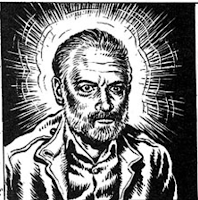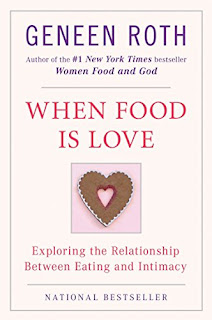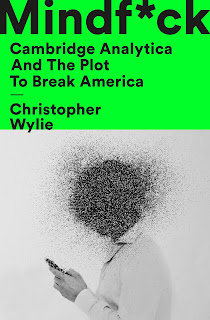Traumnovelle / Dream Story
is the 1926 novella by the Austrian writer Arthur Schnitzler that the 1999 Stanley Kubrick film Eyes Wide Shut was based off of. The film is pretty true to the flow of the book with the exception that the film is much more... provocative than the book. I wanted to understand the ending of the film better where the doctor finds the mask on his pillow. In the book it is insinuated that his wife finds it and places it there, rather than it being a mystery. The book ends in that bedroom scene with him confessing what he’s been up to - the toy store scene at the end of the film was added by Kubrick. The title Dream Story also confirms that the use of soft lenses in the film was an intentional choice by Kubrick to give certain scenes a dream-like quality.
Barbarians At The Gate
What stood out in this book to me was the extreme extravagance the executive class lived in fifty to forty years ago. As the wealth gap in America widens I can only imagine what that life is like now, reading the descriptions in the book made me kinda disgusted. The book is pretty long and dry, you’d probably get more enjoyment out of watching the HBO film adaption of the book. The film comes from a time where the movie was made to cater to multiple different family members who might watch the film together; there is a small comedy B plot about the family dog taking airplane rides. If you’re interested in the leveraged buyout of RJR Nabisco, I’d recommend reading the individual news articles written by the investigative journalists that wrote this book.
American Kingpin
goes into the personal life of the main founder of The Silk Road, Ross Ulbricht, up until after his apprehension and imprisonment. The book gets into Ulbricht’s ideology as well as the ideology of the law enforcement personal that are trying to find him. The biggest surprise from this book was how utterly incompetent law enforcement was, and how the investigation had to get all the way up to the Department of Justice in order to stop the crab mentality different law enforcement agencies had when pursuing the founders of The Silk Road.
Inner Work
is one of the best self-therapy books I think I have ever read and you don’t need to read the whole book. It establishes how you need to talk to yourself and how to best use your active imagination to cultivate mental health. I think I would have considered this book a little “out there” if I had not studied psychology in college first. This will be a book where I buy multiple times to give to people I know and I only really read the last half of the book.
When Food Is Love
The gist of the book is that if you don’t have a healthy concept of self-love or self esteem you will repress negative feelings you have. Overeating is one of the ways that this repression can manifest; food is there for you when no one else is. I wish the author spent more time on strategies for building self-love and self esteem rather than talking about themselves. Maybe some people will find the author's personal examples helpful, I did not.
The Riders Come Out at Night
gives a meticulously researched history of policing in Oakland California and a protracted list of probably all of the known illegal things they have done and continue to do. The book starts with The Riders; who kidnapped, planted evidence on, beat, and tortured citizens of Oakland. From there the book goes into the history of policing in Oakland and San Francisco including the how the KKK actively recruited police officers and sheriffs. The book then chronicles all of the US policing incidents of killing civilians that has happened since. This is a good book, but if you have been on top of the shit show that is American policing, you can probably drop off of the book from where you ended up starting in real life and skip to the last few chapters.
Who Censored Rodger Rabbit
Only picked this up because the idea that Who Framed Rodger Rabbit was derived from an 80s adult fantasy mystery novel was so bizarre to me. It’s a mystery book; I wont give anything away. While reading the book I thought it was silly and I wanted to be done with it, the last page made me want to re-read the book with a new perspective on it. The author Gary Wolf also has mastered the art of the garden path sentence.
The Road To Jonestown
is written in an investigative journalism style and goes up through the life of Jim Jones, and the history of The Peoples’ Temple, up until after the massacre that took place in Guyana. If you’re interested in a first hand account of how a narcissist could manipulate a group of people to kill themselves, this is the book for you. If you’re an American that lived through the Trump presidency, there’s probably not a lot here for you to pick up unless you have a specific fascination in The Peoples’ Temple.
The Minority Report / We Can Remember it for you Wholesale (Phillip K Dick Short Stories)
 |
| From Robert Crumb's The Religious Experience of Philip K.Dick |
Wanted to read some short stories from Dick since I'm a fan of a lot of his books. The Minority Report and We Can Remember it for you Wholesale are sort of almost half-baked ideas with The Minority Report being the better short story of the two. I watched Total Recall recently after reading We Can Remember it for you Wholesale and it's pretty obvious that they slapped a completely different sci-fi screenplay someone else had written onto the end of Dick's story.
Jennifer Government
As a teenager I played Nation States, which was programmed by the author to promote the book. The consensus of people on the Nation States forums that read the book was that it was pretty good and worth reading. I agree, the book is pretty good and worth reading. It’s a dystopian novel written in 2003 where the world is more or less controlled by corporations. Like a lot of (good) dystopian and science fiction books, as time goes on you start to see the parallels between yesterday’s fiction and today’s reality - which probably makes this book even more interesting to read twenty years after its publication.
Mindf*ck: Cambridge Analytica and the Plot to Break America
The Punisher
I thought reading the original series would give some insight into why police and fascists have co-opted the Punisher logo. There was no answer in reading the original series. The answer is that Chris Kyle, the American Sniper guy, used the symbol during his deployment in Iraq and it picked up traction as he built his personal brand.
“We all thought what the Punisher did was cool: He righted wrongs,” Kyle stated in his 2012 book American Sniper. “So we adopted his symbol, a skull, and made it our own."The quote is interesting because frankly, the only kind of adult that would find the Punisher cool is one who cannot understand nuance even if they are repeatedly hit over the head with it. The Punisher has a complete black and white view of the world and it's shown time and time again that his obsession with his own definition of justice and vengeance is destructive. For example, in the series there is a little girl who is shot due to the main character's obsession with vengeance. He does not stop to help the little girl. Maybe in the future I'll put my German degree to use and write an article about how and why fascist movements co-opt cultural symbols.
This comic book was written for children. There's not really much to it, the thing I liked the most was the color coordination and color layout of the individual comic pages. The hyper violence in the comic clashes with what I assumed was comic code regulations of the time. There's lots of people getting shot and killed but no blood or gore at all. In a way the censorship seems counter productive because the gruesomeness and horror of war-like violence is completely taken away. If you're looking for something in this vain I would instead recommend the original The Mask comic series published by Dark Horse.












No comments:
Post a Comment